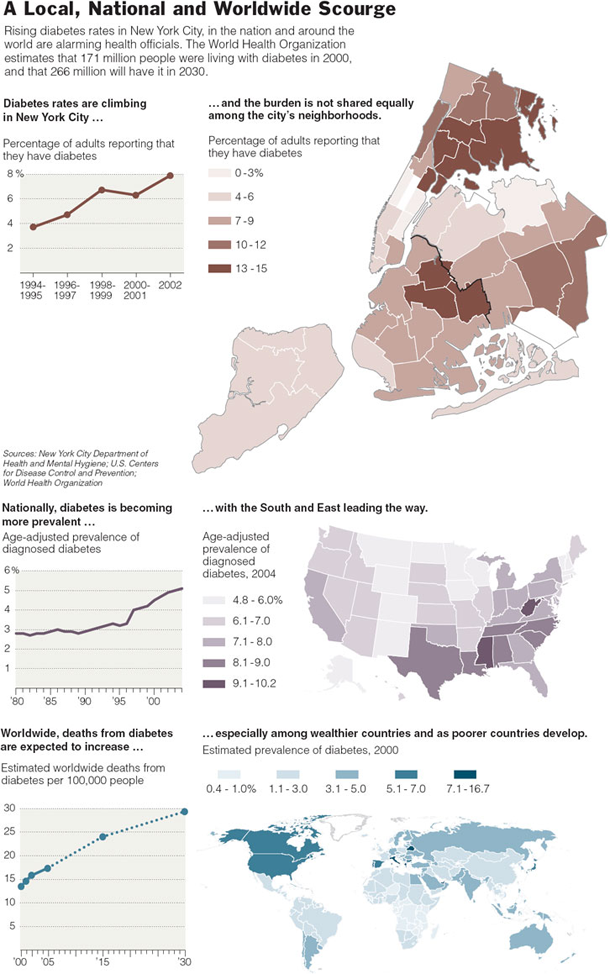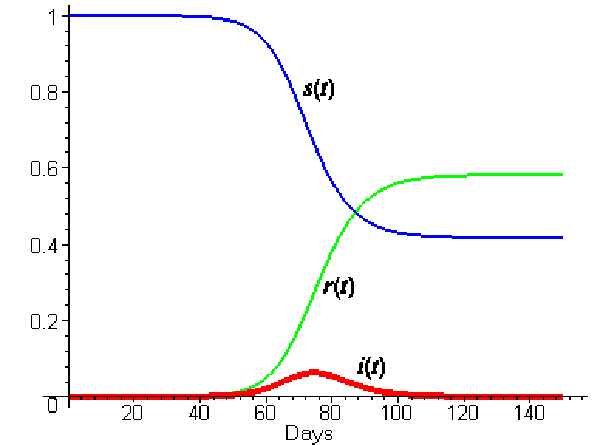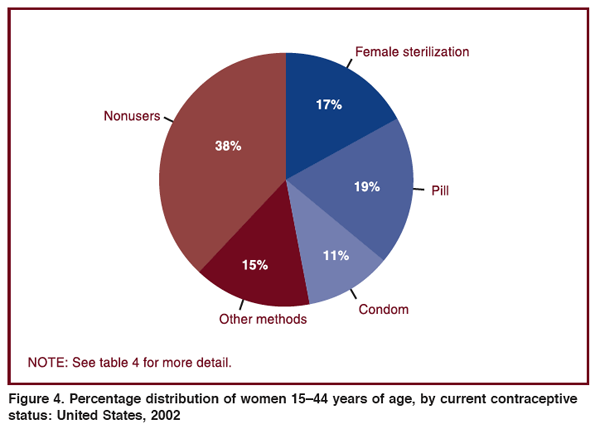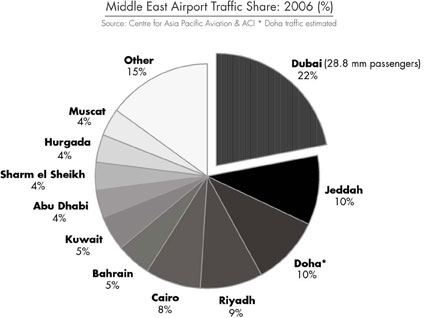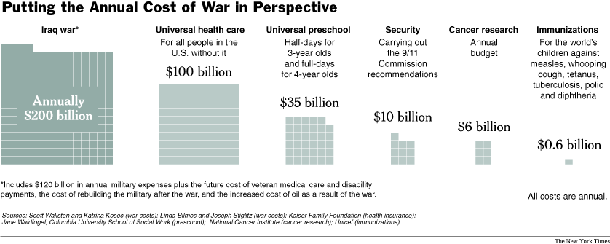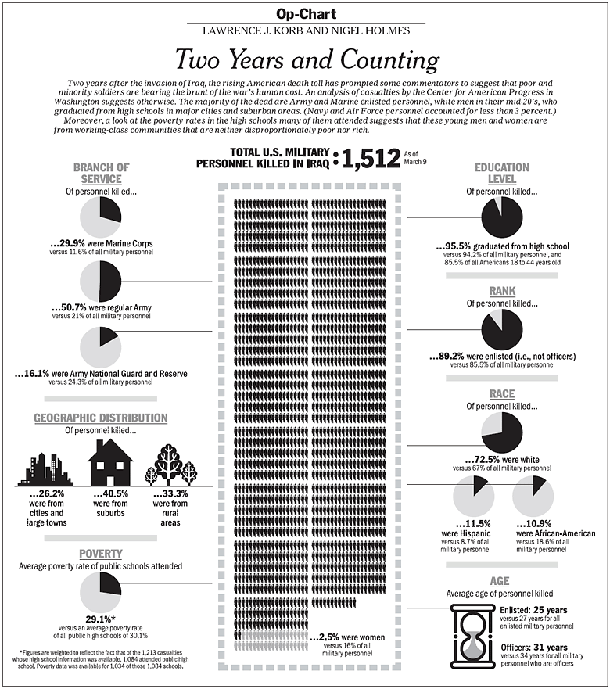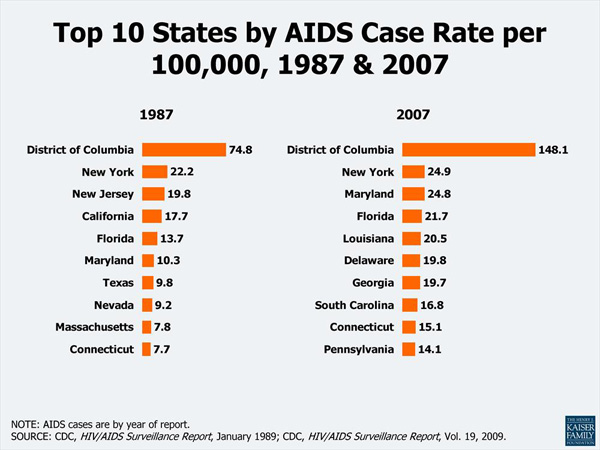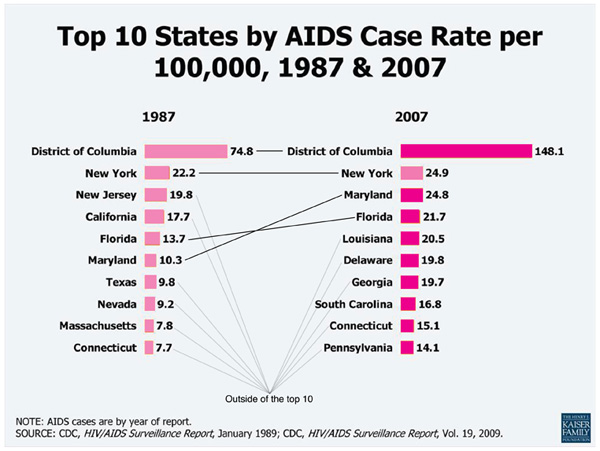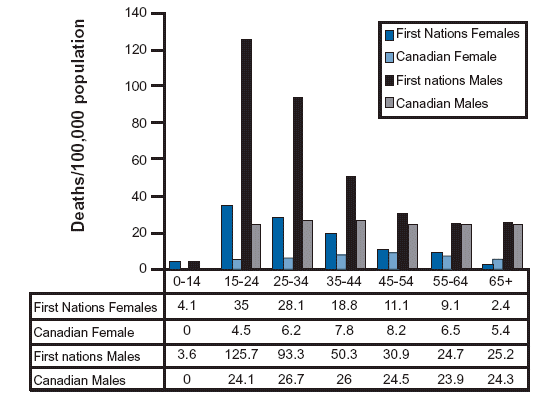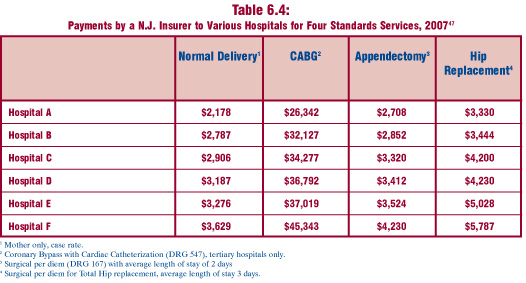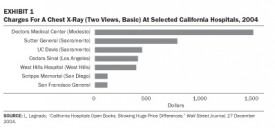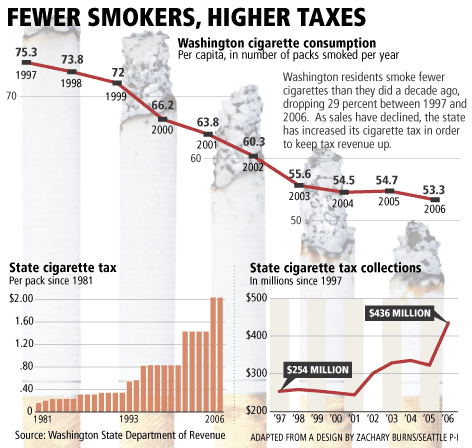
What Works
A simple overlay of graphs goes a long way to telling the story that as cigarette taxes increase, rates of smoking decrease. At the deli where I buy snacks, the cost of a pack is $12. Ouch. The reason raising taxes works so well in this situation is that it tends to prevent teens from starting to smoke in the first place because they are relatively poor and cannot afford to support an addiction causing habit. If they don’t start as teens, they are far less likely to start later in life when they might have more disposable income. Increasing tax rates works when it comes to causing a decline in smoking rates, but it might not work in causing other sorts of macro-behavioral changes, at least not over the long run.
Clearly, because we are looking at tax rates and prevalence rates, the two graphs could not share scales. I probably would have gone for either all line graphs or all bar graphs – I don’t like to mix it up for no good reason.
What Needs Work
Not sure I like the use of burning cigarettes as bars, or at least not these ones. Too cartoon-y for a serious subject.
Relevant Resources
Good Magazine (2008) Up in Smoke Interactive Graphic.
Virgin, B. (2007, 6 March) A taxing problem in anti-cigarette age Seattle PI.

